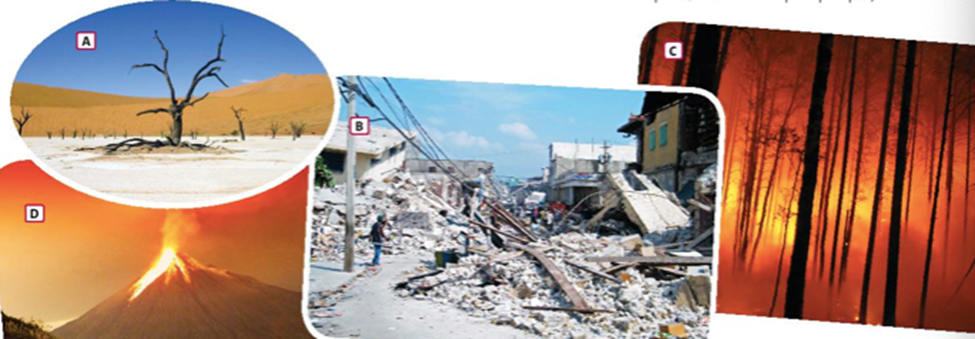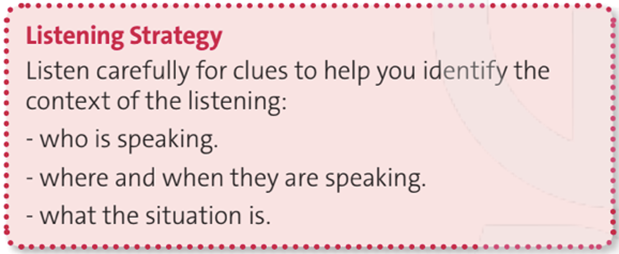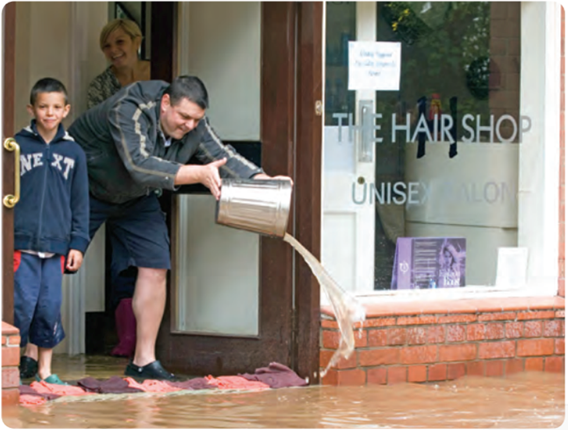Câu hỏi:
18/07/2024 218
Speaking. Work in pairs. Write a dialogue between a journalist and a witness to a natural disaster (real or imaginary). Include some of this information. Act out your dialogue to the class. (Nói. Làm việc theo cặp. Viết một cuộc đối thoại giữa nhà báo và một nhân chứng trong một thảm họa thiên nhiên (thực hoặc tưởng tượng). Bao gồm các thông tin này. Thực hành đối thoại trước lớp.)
Speaking. Work in pairs. Write a dialogue between a journalist and a witness to a natural disaster (real or imaginary). Include some of this information. Act out your dialogue to the class. (Nói. Làm việc theo cặp. Viết một cuộc đối thoại giữa nhà báo và một nhân chứng trong một thảm họa thiên nhiên (thực hoặc tưởng tượng). Bao gồm các thông tin này. Thực hành đối thoại trước lớp.)
Trả lời:
 Giải bởi Vietjack
Giải bởi Vietjack
Gợi ý:
1. Where was the witness? (at home, in the street, in a car)
→ He was at a church.
2. What did they see and do? (helped children / old people, found family members, ran away, phoned the emergency services)
→ He saw a storm damaging his village, a flood swept away all trees and houses. He became homeless and lost everything.
3. How did they feel? (terrified, upset, shocked, worried, helpless)
→ He was terrified and upset.
4. Was anyone injured? (people died / were injured / were taken to hospital, doctors helped people)
→ There were some people got lost in the flood.
Hướng dẫn dịch:
1. Nhân chứng đang ở đâu?
→ Anh ấy đang ở nhà thờ.
2. Họ đã thấy gì và làm gì?
→ Anh ấy thấy cơn bão tàn phá ngôi làng, một trận lũ lụt quét đi hết cây cối và nhà cửa.
3. Họ cảm thấy thế nào?
→ Anh ấy kinh hãi và thất vọng.
4. Có ai bị thương không?
→ Có vài người mất tích trong trận lũ.
Gợi ý:
1. Where was the witness? (at home, in the street, in a car)
→ He was at a church.
2. What did they see and do? (helped children / old people, found family members, ran away, phoned the emergency services)
→ He saw a storm damaging his village, a flood swept away all trees and houses. He became homeless and lost everything.
3. How did they feel? (terrified, upset, shocked, worried, helpless)
→ He was terrified and upset.
4. Was anyone injured? (people died / were injured / were taken to hospital, doctors helped people)
→ There were some people got lost in the flood.
Hướng dẫn dịch:
1. Nhân chứng đang ở đâu?
→ Anh ấy đang ở nhà thờ.
2. Họ đã thấy gì và làm gì?
→ Anh ấy thấy cơn bão tàn phá ngôi làng, một trận lũ lụt quét đi hết cây cối và nhà cửa.
3. Họ cảm thấy thế nào?
→ Anh ấy kinh hãi và thất vọng.
4. Có ai bị thương không?
→ Có vài người mất tích trong trận lũ.
CÂU HỎI HOT CÙNG CHỦ ĐỀ
Câu 1:
Listen and match each dialogue with a photo of a natural disaster (A-D). (Nghe và ghép từng đoạn hội thoại với ảnh về thảm họa thiên nhiên A-D)

Listen and match each dialogue with a photo of a natural disaster (A-D). (Nghe và ghép từng đoạn hội thoại với ảnh về thảm họa thiên nhiên A-D)

Câu 2:
Read the Listening Strategy. Then listen to three dialogues and answer questions 1-3 below for each one. Give reasons for your answers. (Đọc Chiến lược Nghe. Sau đó, nghe ba đoạn hội thoại và trả lời câu hỏi 1-3 bên dưới cho mỗi câu. Đưa ra lý do cho câu trả lời của bạn)

Read the Listening Strategy. Then listen to three dialogues and answer questions 1-3 below for each one. Give reasons for your answers. (Đọc Chiến lược Nghe. Sau đó, nghe ba đoạn hội thoại và trả lời câu hỏi 1-3 bên dưới cho mỗi câu. Đưa ra lý do cho câu trả lời của bạn)

Câu 3:
Speaking. How observant are you? Look at the photo for 30 seconds and remember as much detail as you can. Then listen to the description. What mistakes do you notice in the description? (Nói. Bạn tinh ý đến mức nào? Nhìn vào bức ảnh trong 30 giây và nhớ càng nhiều chi tiết càng tốt. Sau đó, nghe mô tả. Bạn nhận thấy những lỗi sai nào trong phần mô tả?)

Speaking. How observant are you? Look at the photo for 30 seconds and remember as much detail as you can. Then listen to the description. What mistakes do you notice in the description? (Nói. Bạn tinh ý đến mức nào? Nhìn vào bức ảnh trong 30 giây và nhớ càng nhiều chi tiết càng tốt. Sau đó, nghe mô tả. Bạn nhận thấy những lỗi sai nào trong phần mô tả?)

Câu 4:
Listen again and circle the correct option (a-c). (Nghe lại và chọn đáp án đúng)
1. The interview is taking place (Cuộc phỏng vấn diễn ra ở)
a. in the man's house (nhà của người đàn ông)
b. in the street outside the man's house. (con phố chỗ nhà của người đàn ông)
c. in a church hall. (nhà thờ)
2. The speaker (Người nói)
a. works for a charity. (làm việc cho tổ chức tình nguyện)
b. is a politician. (là chính trị gia)
c. raises funds for a charity. (gây quỹ từ thiện)
3. The people who started the fire (Những người gây ra đám cháy)
a. did it intentionally. (cố tình làm cháy)
b. were cooking. (đang nấu ăn)
c. left without phoning the fire service. (rời đi mà không gọi cứu hoả)
4. The volcanic eruption (Vụ phun trào núi lửa)
a. happened last year. (xảy ra năm ngoái)
b. has just finished. (vừa mới kết thúc)
c. is still happening now. (vẫn đang xảy ra)
Listen again and circle the correct option (a-c). (Nghe lại và chọn đáp án đúng)
1. The interview is taking place (Cuộc phỏng vấn diễn ra ở)
a. in the man's house (nhà của người đàn ông)
b. in the street outside the man's house. (con phố chỗ nhà của người đàn ông)
c. in a church hall. (nhà thờ)
2. The speaker (Người nói)
a. works for a charity. (làm việc cho tổ chức tình nguyện)
b. is a politician. (là chính trị gia)
c. raises funds for a charity. (gây quỹ từ thiện)
3. The people who started the fire (Những người gây ra đám cháy)
a. did it intentionally. (cố tình làm cháy)
b. were cooking. (đang nấu ăn)
c. left without phoning the fire service. (rời đi mà không gọi cứu hoả)
4. The volcanic eruption (Vụ phun trào núi lửa)
a. happened last year. (xảy ra năm ngoái)
b. has just finished. (vừa mới kết thúc)
c. is still happening now. (vẫn đang xảy ra)


